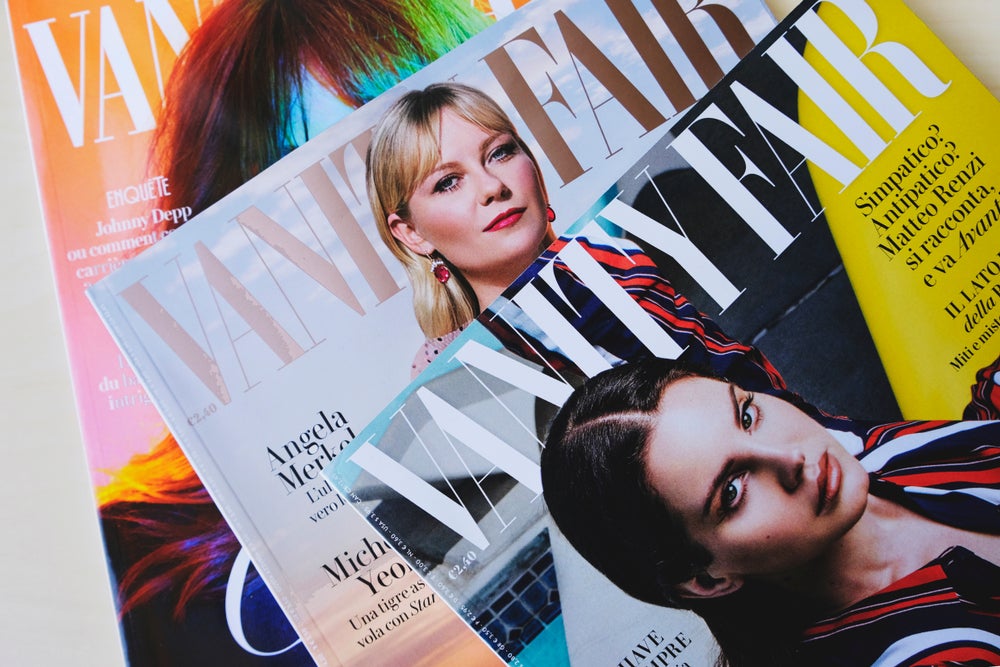Appealing to the inner child, MINI Cooper’s magazine insert campaign this past fall featured punch-out, assemble-able versions of the car built to 1/56 scale. Collectors pounced.
About 4.4 million inserts were created, featuring two cars with different combinations of accessories, complete with assembly instructions. Six nationally distributed magazines added the inserts to copies going to select subscribers: Business 2.0 (550,000 inserts), Fast Company (750,000), Esquire (700,000), Vanity Fair (800,000), The New Yorker (1 million) and Wired (500,000).
Miami-based agency Crispin Porter + Bogusky worked with Structural Graphics, print specialists based in Essex, CT, to create inserts that emphasized rim and roof variations.
“There is a personality associated with the MINI and an attitude that is very cool and playful,” says Mike Maguire, president, Structural Graphics. “When the device is appropriate, it supports the branding.”
Copy between the two printed cars played off the fact that they are intended to sit on the recipient’s desk. “People were very passionately seeking out how to get different MINIs out of different magazines. The collecting became a fun challenge,” says Maguire.
The collectable paper cars extended the life of the brand’s display ads in those titles and increased brand awareness. “Things like this tend to have a multiple impact on the number of impressions you get,” points out Maguire. “When someone shows the car to three or four people around the office, they pass along the readership of the ad.”
According to Meredith Ott, VP-creative services for Vertis, a Baltimore, MD-based integrated marketing firm: “It’s so challenging these days to create something to get the consumer’s attention. With the advent of the Internet and people not having to go to traditional sources for their advertising, it is often difficult to get people to stop and read something that you are selling.”
Structural Graphics created a similar pop-out car for Toyota and its agency, San Francisco-based Hoffman Lewis, promoting the newly designed Camry to former Camry owners. The campaign allowed the consumer to view the tiny model from all sides. “The pop-out cars provide a tactile benefit. When people touch and can hold, more senses get involved as opposed to just looking at an ad online,” Maguire adds.
The pop-out also features detail info and specific features listed on the area of the car where they would appear. Some 96,000 pieces were created and directly mailed to northern California Camry owners.
Design is the key element to punch-out promotions. Paper engineers work to render designs out of paper that will eventually form a three-dimensional car. Engineering, production and die-cutting are critical to the success of the promotion. “We needed to come up with a design that the agency liked, that the client liked and that stayed true to the lines of the car,” explains Frank Beck, senior account manager, Structural Graphics. “By adjusting die-cuts we had to ensure that the cars would be easy to perforate out but would still stay intact in the publication.”
Specialty ads that offer potential customers a printed premium literally “pop-out” from other ads, Maguire and others say. “When you are in competition with other advertisers, it’s important to get consumers to stop, look at your ad and consider your message, and not just flip by to the next page,” says Janice Mayo, senior VP-national sales and marketing, Vertis. “Advertisers should consider these types of tools because they grab the consumer’s eye and get readers involved in the piece. Inserts are something that consumers can interact with for longer periods of time, so the message makes a greater impression for that consumer.”
Purebred Hotbed
A group of IKEA and Gap veterans are trying their hand with puppies. Woof & Co. has opened two stores in Boston malls, with plans to add six stores in 2004 and roll national in 2005. The chain sells purebred puppies and upscale accessories, a distinct niche in the $30 billion-plus U.S. pet industry. It competes with private breeders, not big-box chains like PetsMart or Petco. “We’re not interested in going head-to-head selling dog food,” says Linda Povey, partner at consultancy Kanter International, which created Woof & Co. “Their strategy is high volume, low prices. We’re a lifestyle store.”
The Edison, NJ-based start-up gets its puppies from Hunte Corp., a Goodman, MO-based broker for U.S. breeders. Prices range from $750 to $1,800, comparable to private breeders, with a 50%-plus profit margin. Each pup has a three-year warranty against congenital and hereditary defects. Puppies travel by air-conditioned truck to stores, where they get 75% of retail space (for 80% of sales); high-end accessories get 15%; basics get 10%.
Former IKEA U.S. president Steen Kanter took a request from Meridian Venture Partners to save nine Family Pet Centers from Chapter 11 in 2002. IKEA and Gap veteran Don Jones became Woof & Co. CEO in October; Baby Gap alum Karen Oden took on operations in November.
Woof & Co. is building a database on owners and their puppies. For now, marketing is in-store only, with grand opening info mailed to pet owners within five miles. Marketing will ramp up when markets get a critical mass of stores.



